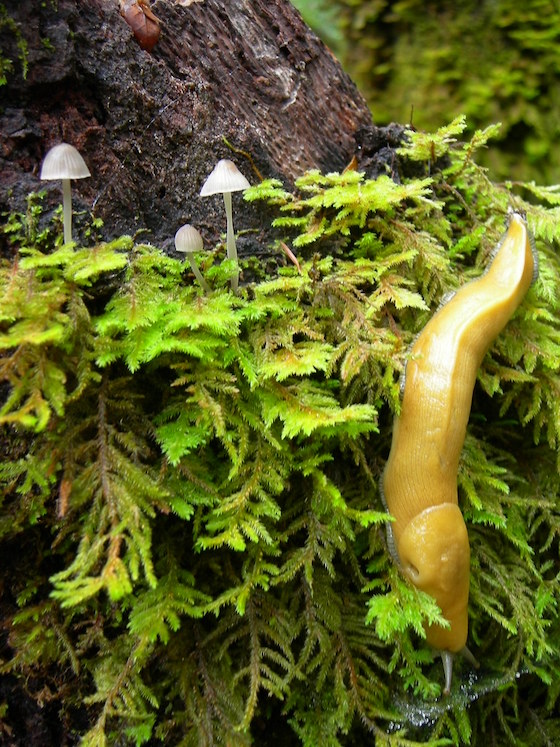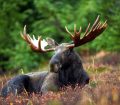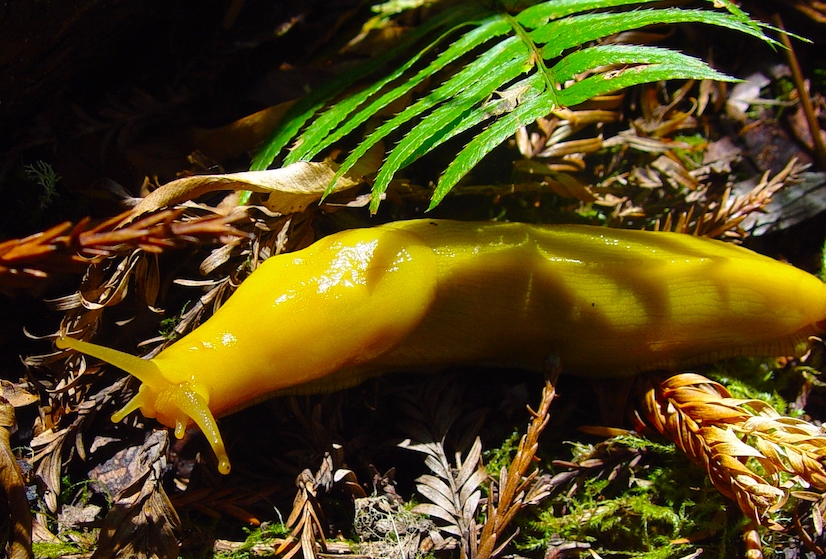The Banana Slug (Ariolimax californicus), named after the fruit it so closely resembles, is the second largest slug in the world, growing up to 10 inches long and weighing as much as a quarter pound burger…but far less tasty.
The bright yellow banana slug, which also comes in hues of brown, white or green, lives on the forest floors of North America’s Pacific rainforest belt from northern California to southeastern Alaska. There are also a few isolated populations as far south as the Palomar Mountain Range in San Diego, California.
The banana slug thrives in cool, wet forest floors where this thin-skinned mollusk can avoid the heat and arid environment. Since the slug has no shell, it can quickly dry out, so it is mostly active at night.
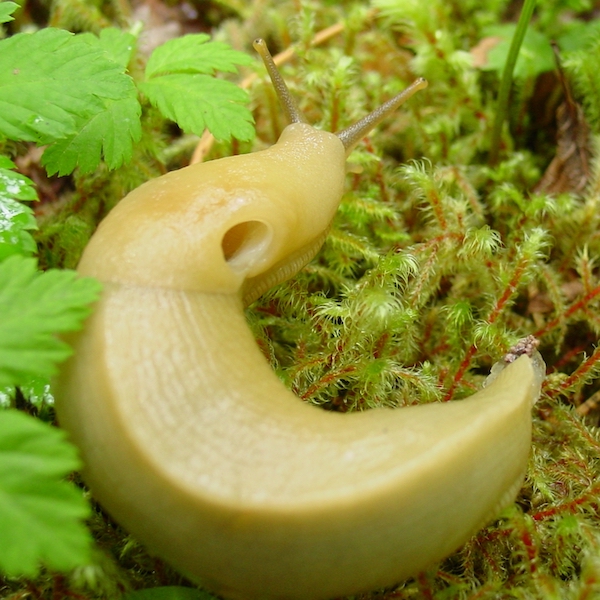
On the right side of the slug’s head is a hole that is called the pneumostome. Acting similar to a whale’s blowhole, the pneumostome moves air in and out of the banana slug’s only lung. Depending on the environment, this hole is opened or closed to maintain the slug’s moisture and oxygen levels.
The banana slug’s primary defense against turning into a dried out piece of slug jerky is the thick coating of mucus it excretes to cover its body. Dirt and leaves stick to the slime and act as a form of insulation to help keep its body moist.
The slime has some pretty magical properties. It’s a crystal that is excreted as a dry granule which absorbs 100 times its volume in water when it comes in contact with moisture. This slime simultaneously acts as a lubricant and an adhesive, allowing the banana slug slide along the ground and still be able to climb a tree. Muscles in the animal’s foot contract in waves to push the slug forward, sliding over the slime, at a pace of 3-4 inches per minute.
The banana slug also has a mucus plug at the tip of its tail. Kind of like a spider, the slug creates a slime rope from this plug and uses it like a rappelling line to descend from high places.
The banana slug’s slime will also make a predator’s tongue go numb. Raccoons will often roll the slug in dirt before eating it. The dirt binds to the slime and insulates the raccoon’s tongue from the slime’s anesthetic effect.
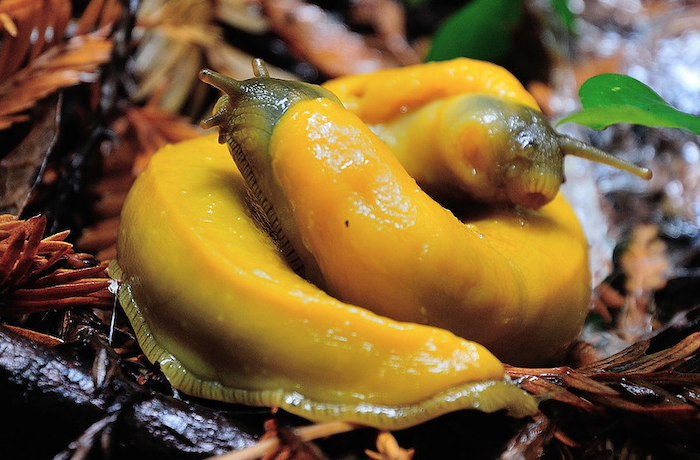
The banana slug’s slime also plays a crucial role in its reproduction. To say this slug’s dating life is unique is an understatement. In addition to its other properties, the banana slug’s slime contains pheromones that signal other slugs it’s time for a hot date night.
As a side note, compared to other animals, the banana slug also has what is considered to be the largest male genitalia relative to its body size. When primed for action, the slug’s phallus can stretch the full length of its six-inch body.
Once the slugs find each other, they mate. And it doesn’t matter which slug hooks up with another slug because banana slugs are hermaphrodites. Each produces sperm and eggs and mating is accomplished when the two slugs exchange sperm. Sometimes, the slugs get stuck during intercourse and are unable to pull apart. If this happens, they will bite off the phallus of the other slug.
If the mating comes to a successful conclusion, however, the slug will lay about 75 translucent eggs in a log crevice or on a leaf. The eggs are left unprotected and if they’re not eaten by salamanders, will hatch in about two months.
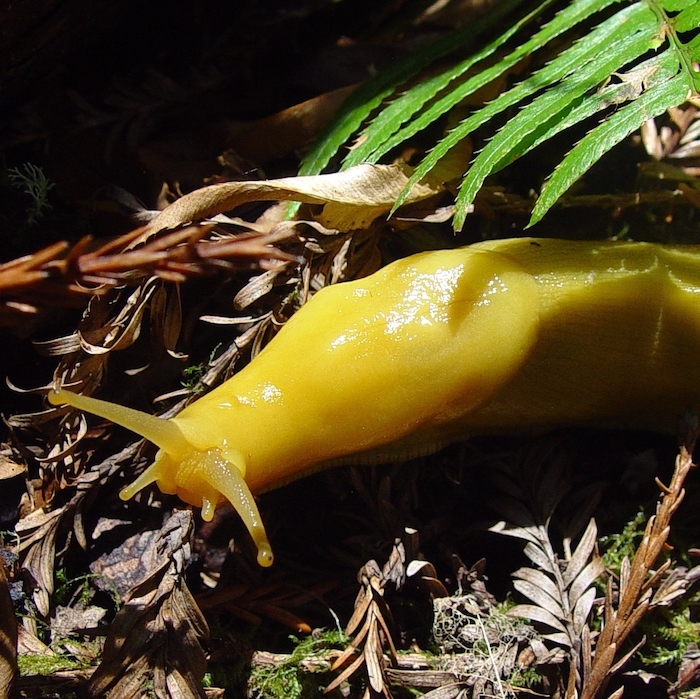
The newborn banana slugs start traveling immediately in search of food. In these early stages of life, before they get too big and slimy, they are a favorite food of birds and other small predators like moles and shrews. If left unscathed, a banana slug can live for up to seven years.
The banana slug has two sets of tentacles. The upper tentacles move independently and serve as eyes. Each tentacle has a black dot at the tip that is sensitive to light and movement. The bottom two tentacles are sensitive to chemicals and are used for touch and smell. Both sets of tentacles retract and extend to avoid danger. If a tentacle is bitten off, the banana slug can grow a new one.
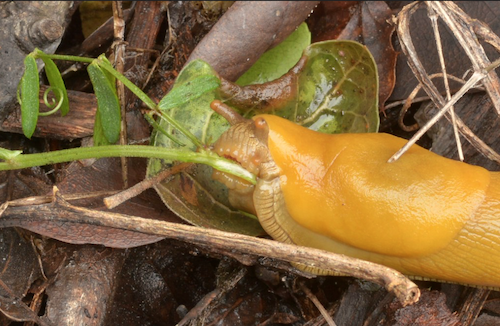
Banana slugs serve as decomposers in their ecosystem. Using the mouth on the bottom of their head, they eat leaves, moss, dead plant material, and animal droppings. The slug’s tongue, or radula, is covered in rows of sharp microscopic teeth that grind the food on its way to the slug’s stomach. At the end of the journey through the slug’s digestive system, the food is excreted as nutrient-rich humus for the soil.
The banana slugs also play a critical role in preserving coastal redwoods. A recent study found that confined banana slugs would starve rather than eat redwood seedlings. Yet, they will devour other plant seedlings. This selective slug palate not only eliminates the young redwood’s competition, it also turns them into fertilizer.
